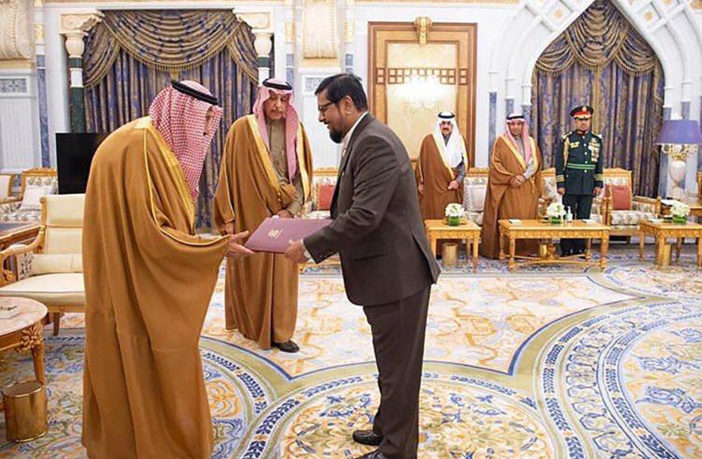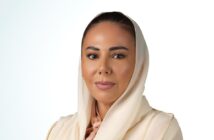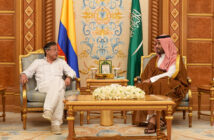Ambassador of the Republic of Mauritius
How important is tourism for Mauritius’s economy and society? What is the impact of opening direct flights between Saudi Arabia and Mauritius?
Before the pandemic, the tourism and hospitality industry contributed around 24% of the GDP of Mauritius. Some 50,000 people are directly employed in this sector accounting for 22% of the country’s employment. Tourism has a significant spillover effect on the whole economy (transport, agriculture, wholesale and retail trade, and administrative and support services).
During the pre-pandemic period, 22,788 Saudis visited the island in 2019 compared to 16,507 in 2018, an increase of 38.1%. During the pandemic, the number of tourists was lower because our borders were closed from March to September 2021.
The impact of direct flights between Saudi Arabia and Mauritius is definitely a boost for our tourism and also the business sector as many Saudi visitors are from the business community and they can have a glimpse of opportunities offered during their stay.
Mauritius is gradually becoming a leading tourist destination for Saudi travelers. What is your advice for Saudis traveling to Mauritius?
Luxury tourist destination, quality service, sandy beaches, lush nature, a wide range of water and land-based activities, rich gastronomy and culture, luxury accommodation, villas with private pools, world-class golf and spa facilities and the hospitality of Mauritians… these are the assets that will please Saudi travelers. The population of Mauritius, which is multicultural, multi-religious and also multi-ethnic, is known for its peaceful coexistence and communal harmony. The right of worship is enshrined in the Constitution of Mauritius.
The presence of Muslims dates as far back as the French colonization in 1722 when Indian skilled workers were recruited. Some decades later, Muslim traders settled on the island. Muslims account for almost 20% of the population and the community is well integrated into society. There is total freedom on how the Muslims practice their religion and we have a few denominations among Muslims.
The presence of Muslims in Mauritius assures that the food in practically all restaurants/hotels and places of restoration is certified halal. Muslim dishes are now an integral part of Mauritian cuisine. This respect for habits and customs contributes to making Mauritius a family destination known for its diversity and rich ancestral tradition.
One of the main goals of Vision 2030 is to make the Kingdom a leading tourist destination. In your opinion, what makes Saudi Arabia an attractive and charming place to visit?
Mauritians of all faiths know Saudi Arabia through the two holy mosques in Madinah and Mecca. Hence, religion is an important element. Religious tourism is very important in the mosaic of what is Saudi Arabia in the Mauritius psyche.
Furthermore, Mauritians who are avid fans of history recognize Arab presence in the Indian Ocean and in Mauritius before the Portuguese came. The island of Mauritius was first named Din-Al-Arabi. There is an important tourist resort in the south west of the island namely Dinarobin which stands as a testimony to this reality. There are also other Arabic names which are part of our lingua franca today.
Saudi Arabia is also known for its seafood, ports, dates, perfumes, dunes, and its vast reserves of black gold. It is also known as the land that witnessed some old civilizations and became a crossroad of inland world trade at one point in time. Hence, the image of Saudi Arabia is very rich and diverse for the inquisitive Mauritian.
According to the Global Sustainable Tourism Council (GSTC, 2019), Mauritius has achieved the ‘GSTC-Recognized Standard.’ How does a focus on sustainability contribute to preserving national heritage beyond environment and nature?
Recent trends in the worldwide tourism sector indicate a change in what modern travelers are looking for. There is a shift towards more authentic experiences and encounters with the local community. As for Mauritius, the focus on sustainability has made us propose various aspects of our multicultural heritage.
The population of Mauritius is made of descendants of migrants coming from Europe, Africa, India, and China. Their heritage has been preserved and can be seen in daily life in the languages, religion, food and way of living.
Churches, temples and mosques coexist across the island. These are assets that make out our sustainability offer. You will be glad to know that this year, two historic villages of Mauritius: Le Morne and Vieux Grand Port are on the list of the “Best Tourist Villages” for 2021, made public by the General Assembly of the World Tourism Organisation (WTO) in December 2021. The first village, whose cultural track is already inscribed by UNESCO as a World Heritage Site, is iconic for its slave history and the second one bears testimony to the first inhabitants of the island.
Diplomatic Quarter connects most of the foreign missions in Saudi Arabia. How do you think this approach contributes to multilateral and intercultural diplomacy?
The DQ houses most, if not all, diplomatic representations. Furthermore, it also has residential areas and some very beautiful parks that are very family-friendly. This concept of organizing space is very interesting and promotes a host of informal and formal intercultural interactions.
Currently the regional office of the World Tourism Office for the Middle East and other regional offices are located in the DQ. Hence, the DQ provides a platform for official interaction. Two important ministries are also in the DQ and this facilitates official interaction as well as bringing the ministries closer to the diplomatic community.
The construction of shopping malls and food courts, I believe, would further contribute towards more fluid interactions between the Saudis and the foreign community.
What is the daily routine of the Ambassador of Mauritius in the DQ? Any favorite places?
My embassy is very small, therefore, the array of my diplomatic actions is very limited and very focused.
In terms of places of interest, there are many historical sites which need to be revitalized around Riyadh.
I am looking forward to the completion of the Diriyah Gate project which I have no doubt would be an example of the Saudi savoir-faire and rich architectural/historical tradition. What is even more fantastic is the ability and vision of the rulers in the Kingdom of Saudi Arabia in blending tradition with modernity.




